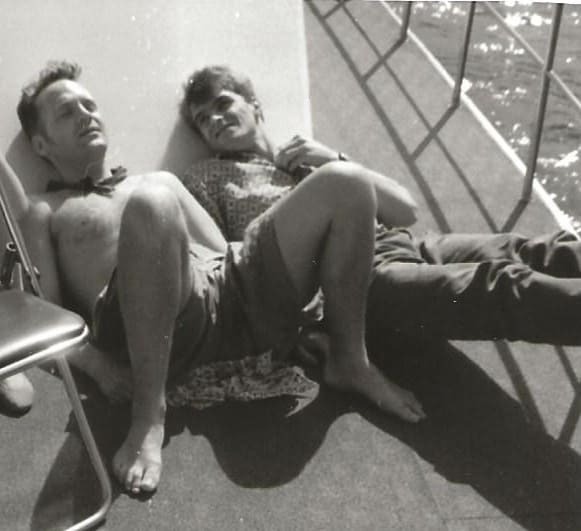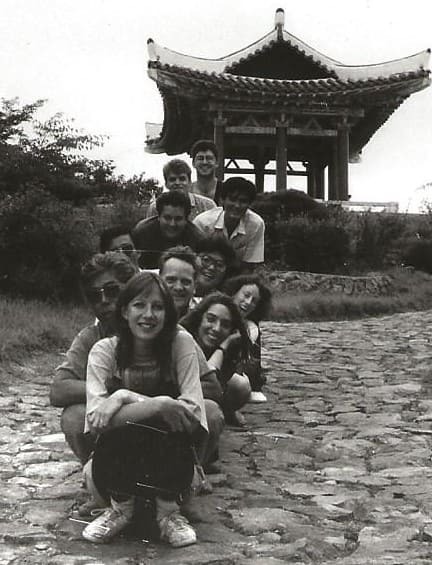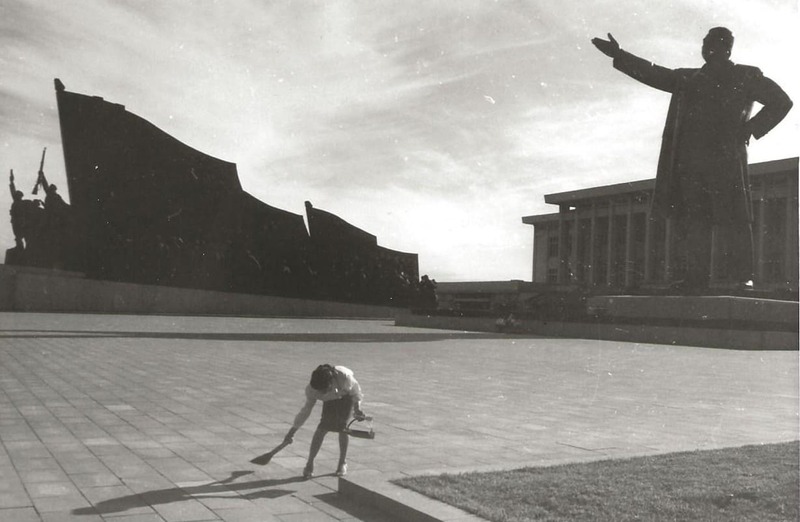Koryo Tours are celebrating a 30-year anniversary of operating tours in North Korea. We take a look back with guest writer Calum MacLeod on the first-ever Koryo Tours tour.
Off to the land of miracles, now North Korea may finally reopen?
Start your journey with a Chinese miracle.
Beijing to Pyongyang; a Train like No Other
Built in just eight months, Beijing Railway Station married Chinese tradition and Stalinist lines as one of the capital’s Ten Great Buildings that shot up in 1959 to showcase the PRC’s 10th birthday.
The Chairman Mao portrait has long gone, but the station’s clock towers still chime his anthem, “The East is Red”, above grand halls that echo with travellers and possibilities.
Back in August 1993, our party of six Beijing residents gathered in the foreigners’ waiting room- still a thing, as was FEC, China’s separate currency for non-Chinese.

Why North Korea?
Beijing offered three international rail adventures: Moscow, Ulaanbaatar and Pyongyang. Long linked by socialism, the trio were well out of lockstep that summer. Boris Yeltsin was wrestling with Russia’s Supreme Soviet. Mongolia’s fragile democracy was shaking off the Soviet yoke. But the Democratic People’s Republic of Korea was sticking to its socialist path.
A trip there might highlight China’s hardline past, and the clock was surely ticking. Let’s see North Korea before it changes!
We boarded night train no.27 to Pyongyang, to start what became the first Koryo Tours tour (the firm was only born months later). Our great leader Josh Green had spent a year in Pyongyang for courier TNT, the parcel people who took a wild punt on eastern bloc changes which never travelled that far east.
North Korea... How?
Josh barely shipped a sausage.
But his contacts delivered a rare commodity: the tourist visas that enabled the ultimate holiday with a difference. We’re really going in, to see the world’s most isolated, most totalitarian state.
Our soft-sleeper carriage buzzed with beers and Nick Bonner. This live-wire landscape architect, Koryo’s future supremo, was exploring Beijing’s arts scene.
And about to have his head turned.
The east looked red at dawn approaching the border city of Dandong. A Mao statue waved us across the Friendship Bridge, over the Yalu River and into Sinuiju, where Kim Il Sung’s statue waved back. China was going gangbusters with capitalism, while North Korea stayed advert-free and military-focused.
Journey Into Pyongyang
We watched families wave hundreds of teen conscripts onto trains for training further south.
On our platform, Josh and Nick tried to charm frosty station staff. Their party piece, a two-man roll, left kilt-wearing Nick badly exposed. He was mooning Kim. Arrest or worse - beckoned. Instead, they won laughter and smiles. The clown had broken the ice.
He was mooning Kim. Arrest or worse - beckoned.
Pyongyang came into view with the pyramid-shaped Ryugyong Hotel, the world’s tallest at that time. Topped out a year earlier but far from ready. Much unlike our two guides, the courteous Kim and Kim, waiting on a wide, spotless platform to supervise our four-day stay.
We walked out of the station, a socialist classic from 1958, under large portraits of Kim Senior and son Kim Jong Il.
The tour tone was set.
Flattened by war, North Korea’s capital was now studded with Great Buildings, super-sized symbols for the dynasty that still rules in 2023. The Arch of Triumph – taller than Paris! The May Day Stadium – the world’s biggest!
Read all about them on the Koryo website.
A Human Insight
More abiding memories came on a more human scale.
Separate bus queues for women and children, who got on first. Shoppers buying food with ration books, from poorly stocked shelves belying the propaganda posters in the window. Glimpses of living room walls, decorated only by the two portraits, hung high so no one stands above them.
We were privileged visitors, in a showcase city of the elite. On a cadres’ riverboat on the Taedong, we sunbathed after a barbecue feast, plus cold noodles and sweetcorn ice cream (delicious). At 2 p.m., two fountains burst forth – to world-record height- casting rainbows above the smiling city folk who rowed closer to wave at the foreign guests.
These citizens pay no rent or tax, suffer no crime nor unemployment, and live to 75 on average, museum guides told us.
What to believe?
Over two nights and several beers, the hardy handful of expats shared tales of isolation and mental stress that put our China struggles in perspective. “I must have done something wrong in a previous life,” laughed one.
(Yes, I kept a diary).
A diplomat from the just-born Czech Republic lamented that after Czechoslovakia’s “Velvet Divorce” he was stuck in Pyongyang, in the embassy Prague opened during the Korean War. While Slovakia bagged the recently opened Seoul embassy.

What Did We Miss?
Looming disaster.
Over three million Koreans likely died in the “Arduous March” famine (1994-98). The Soviet collapse had slashed food and fuel imports, and then China, too, cut aid in 1993. The very year of our visit.
Shortages spread, as did the billboard campaign “Eat two meals a day”, not three, according to foreign media. We were on holiday, we weren’t journalists, but hindsight prompts regret at being kept far from ordinary lives.
Our hosts kept us well-fed, marshalled and entertained.
The mass games in that massive stadium outdid any Olympic ceremony theatrics. A journey to the 38th Parallel revealed the Cold War’s last frontier, from its rarely-visited north side. The adventure continued to the end: our troubled bus broke down again, so Josh bundled us into the TNT van to reach Pyongyang airport.
Beijing was the sole flight that day.
Koryo Tours & Studio
What also took flight was Koryo Tours and later Koryo Studio.
Josh, Nick and Simon Cockerell built the main vehicle for visitors to take this road less travelled, from Monty Pythons and marathon runners to the Middlesborough Ladies football team. Powered by humour, humanity and belief in people-to-people engagement, Koryo has forged real friendships and blazed new trails, including the DPRK’s first girl power movie, Comrade Kim Goes Flying.
Thirty years after our trip, North Korea remains a mystery to most, while China under Xi Jinping has earned the nickname “West Korea” for his totalitarian turn.
Pyongyang’s Greatest Building, now dubbed the “hotel of doom”, remains unfinished, but serves as a spectacular propaganda screen for the third Kim to rally his nation by rattling East Asia.
Go see North Korea, before it changes!
And take the train.
